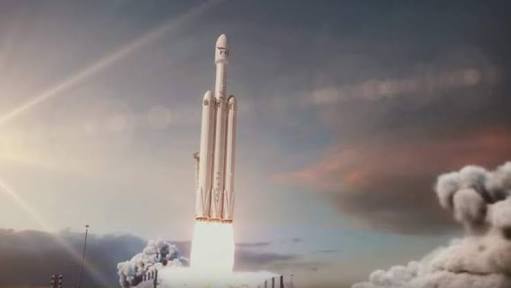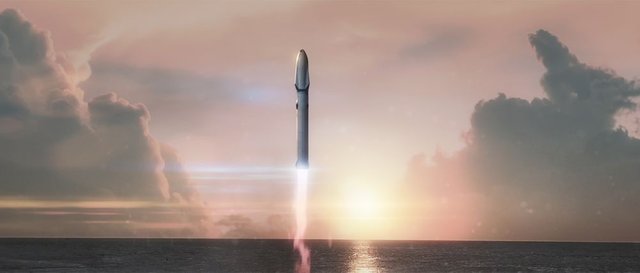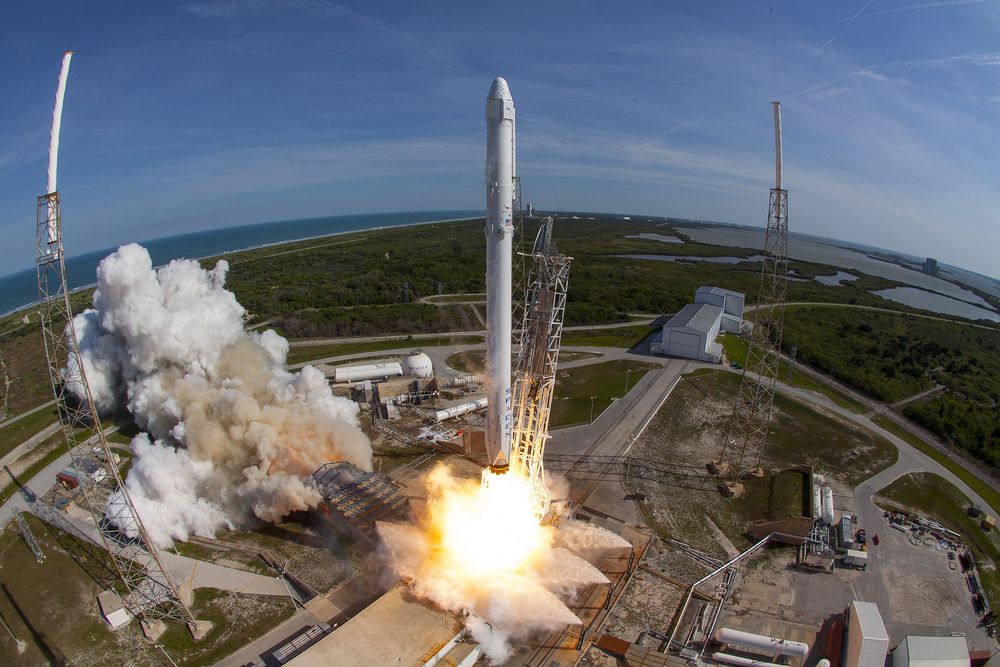.jpeg)
More launches, bigger rockets, and deeper challenges await
The first launch of the Falcon Heavy rocket was mostly a success for SpaceX. The middle rocket core broke apart when it crashed into the water next to the company’s autonomous drone ship, and the Tesla payload overshot its target. But the launch was an otherwise excellent showcase of what the Falcon Heavy is supposed to be all about: big-time power to propel big-time payloads.
So what comes next for the private spaceflight company? The answer has three parts: one for each of SpaceX’s current and future rockets. There is, of course, the Falcon Heavy itself. But it’s partially made up of Falcon 9s, reliable rockets in their own right, and the current money-makers for SpaceX. Also, last year, Elon Musk announced the Big Falcon Rocket, or BFR. The company’s immediate future will be all about finding a balance between the first two until the BFR is ready to fly.
FALCON HEAVY
The next launch of the Falcon Heavy won't be for another “three to six months,” according to SpaceX CEO Elon Musk. The cadence for Falcon Heavy flights depends on two things, Musk said: the rate at which the company can produce the center section of the rocket, and customer demand. The outer boosters are easy to produce because they’re just Falcon 9 boosters with nose cones attached. The Falcon Heavy’s center core uses the same engines as a Falcon 9 booster, but the rest of the metal tube, known as the rocket’s airframe, has to be upgraded for each flight.
So, Musk says, the rate of Falcon Heavy flights is “is really [dependent on] production rate of the airframe of the center core.” Since that’s the main difference, he says, “we can really produce Falcon Heavies at a pretty rapid rate. Whatever the demand is, we’ll be able to meet it.”
THE FALCON HEAVY “CAN LAUNCH THINGS DIRECT TO PLUTO AND BEYOND. NO STOP NEEDED.”
That demand is hard to parse at the moment. There are a few launches scheduled for 2018, such as a large Saudi Arabian communications satellite and a test payload for the US military. But Musk envisions “several” Falcon Heavy launches a year, a point he reiterated this week.
“The great thing about Falcon heavy is that it opens up a new class of payload,” he said. “It could launch one more than twice as much payload as any other rocket in the world, so it’s up to customers what they might want to launch. But it can launch things direct to Pluto and beyond. No stop needed.”
In the meantime, the company will also be working on fixing the problem that doomed the central core’s landing. Musk has said the plan with the Falcon Heavy is to recover “at least two of the three cores” on each flight, though recovering all three would be ideal. And SpaceX has a good idea of what went wrong with the third landing. The rocket needs three of the nine engines to land, and only one lit up. So that’s where they’ll start.
The next Falcon Heavy won’t reuse any of the major pieces that survived this flight. The two side boosters that went up this week, which had already flown on their own Falcon 9 missions, are being retired. They are older versions of the Falcon 9 architecture, and the company only wants to refly the newest versions of Falcon 9 rockets from now on, Musk said in a post-flight press conference. So, the next Falcon Heavy launch, whenever it is, will be powered by a brand-new center core and two other side boosters.
The company might, however, reuse the cross-hatched pieces of metal at the top of each rocket that help guide it safely to the ground, which are called grid fins. Musk mused in the post-launch press conference about how happy he was to have recovered them. They take a long time to produce, he said, especially since the company began making them out of titanium. “Those frickin’ grid fins, they’re super expensive,” he said. “That was the most important thing to recover.”
“WE WANT A NEW SPACE RACE. RACES ARE EXCITING.”
Beyond flying again, Musk said he hopes the first flight of the Falcon Heavy inspires more competition. At the post-flight press conference, he spoke about how the rocket was developed using around $500 million of the company’s own funds. That’s a lot of money, but it’s a sliver compared to the multi-billion dollar price tags of some other famous rockets. “I think it’s going to encourage other countries and companies to raise their sights and say hey we can do bigger and better, which is great,” he said. “We want a new space race. Races are exciting.”

BIG FALCON ROCKET (BFR)
If it seems like the plans for the Falcon Heavy fall short of Musk’s Mars ambitions, that’s because the rocket has been superseded. Last fall, Musk announced updated plans for the Big Falcon Rocket, a giant booster rocket with a large spaceship that sits on top. It’s meant to shuttle hundreds of humans to the Moon or Mars, but was also suggested by Musk as a way to pull off quick flights around our own planet.
Musk said that all of SpaceX’s resources would be poured into developing the BFR when he announced the new rocket architecture, and that it would eventually obsolesce both the Falcon Heavy and the Falcon 9. This week in Florida, he reinforced that commitment. He said the company may even be abandoning plans to fly humans on the Falcon Heavy, moving those missions to the BFR.
SpaceX plans to fly humans in the Dragon spacecraft on top of Falcon 9, and the company had initially planned to do the same with the Falcon Heavy. One of the missions SpaceX is planning would use the Falcon Heavy to send two paying tourists around the Moon later this year. And the company obviously had its sights set on using the Falcon Heavy to take astronauts on similar journeys.
IF BFR IS READY, SPACEX MIGHT GIVE IT SOME OF FALCON HEAVY’S MISSIONS
But development of the BFR is coming along at such a clip that Musk believes the company will move these potential missions to the larger rocket, he said earlier this week. That means the Falcon Heavy wouldn’t have to go through the time-consuming process of getting approved for human spaceflight.
As it stands, Musk said he believes SpaceX will be ready to perform “short hop” tests of the BFR spaceship sometime in 2019 at the company’s new (and unfinished) facility in Brownsville, Texas. These would likely resemble the earliest tests of the Falcon 9 rocket, which were simple flights of a few hundred meters or so.

WHAT ELSE?
SpaceX has a number of ambitious goals for the next few years. The company plans to increase the pace of its rocket launches, which is already at more than one per month; start flying humans to the ISS and around the Moon; and finish developing and testing the BFR, which would pave the way for the company to achieve Elon Musk’s goal of colonizing Mars. It’s a pretty full slate, but it’s still not the whole picture.
WITH MUSK, ANYTHING CAN CHANGE
For one thing, SpaceX still has to show a lot more of its own work when it comes to the company’s plans for the Moon and Mars. Beyond a few pretty renderings of lunar and Martian bases, we still have no concrete details on how Musk believes he can (let alone will) build these human habitats. He has also often dodged one of the most important questions: how he plans to keep humans alive during extended spaceflight, where radiation is a problem. Large questions remain about how it would even be possible to live on Mars for any extended period of time. And, most importantly, it’s still not totally clear how he would fund the whole effort.
Hi! I am a robot. I just upvoted you! I found similar content that readers might be interested in:
https://www.theverge.com/2018/2/7/16983040/spacex-falcon-heavy-rocket-launch-schedule-spaceflight
Downvoting a post can decrease pending rewards and make it less visible. Common reasons:
Submit
Hi, I found some acronyms/abbreviations in this post. This is how they expand:
Downvoting a post can decrease pending rewards and make it less visible. Common reasons:
Submit